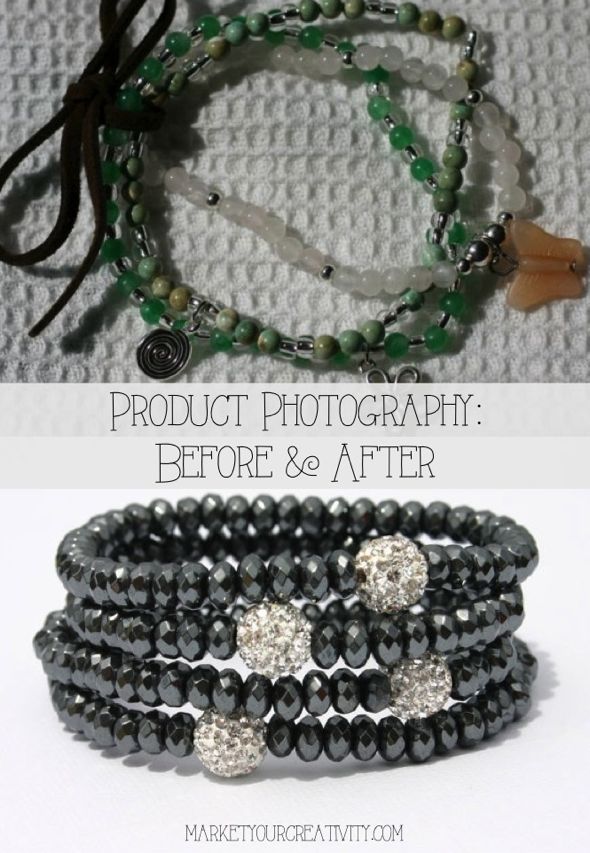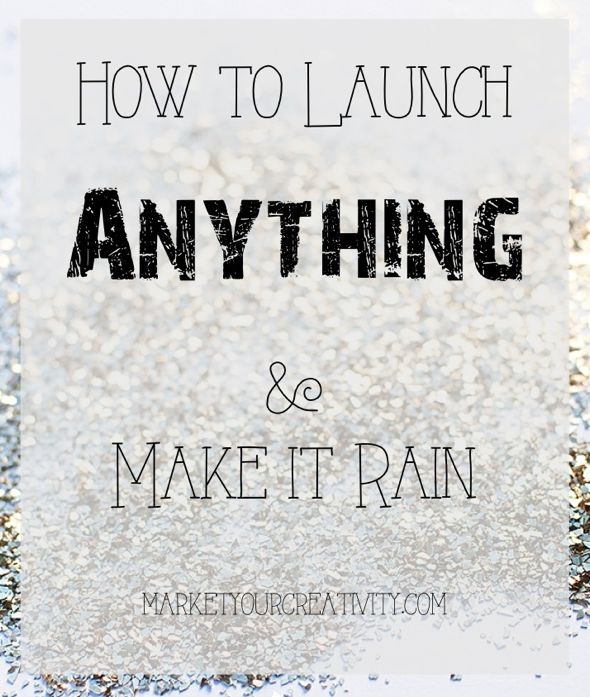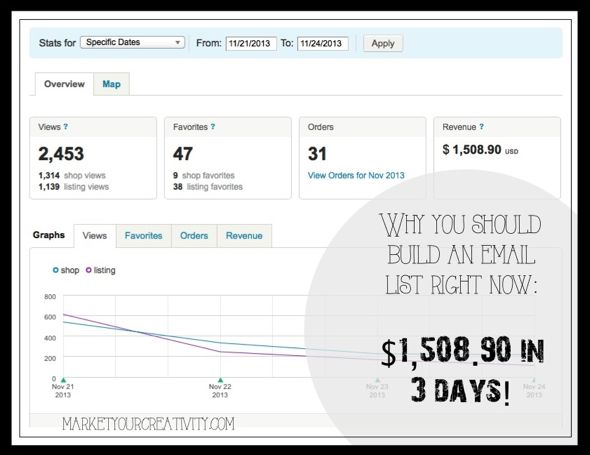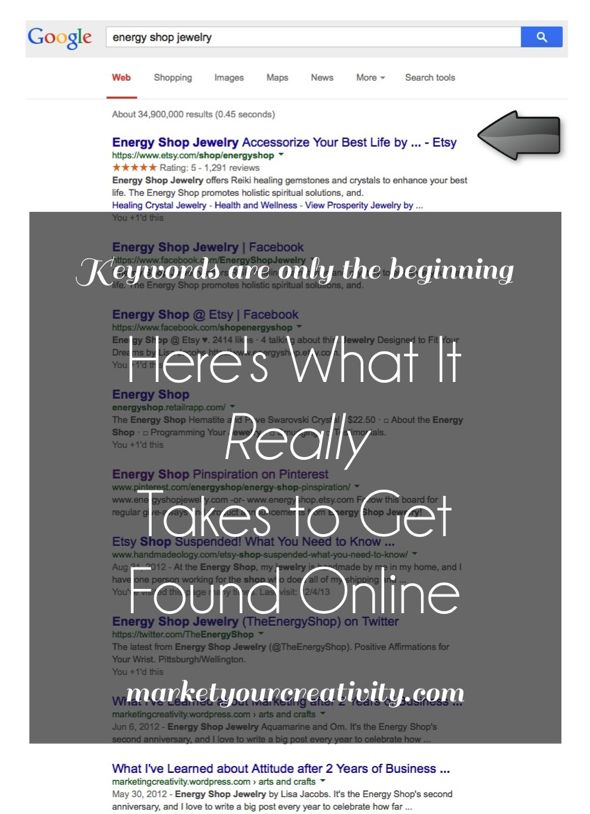A client of mine recently asked how she should go about launching her new Etsy shop. I’ve never had an “official” launch on a website (I simply started my sites and built on from there), but I have successfully launched products, books and e-programs.
The following advice is universal and can be applied to your blog, Etsy shop, website, product line and whatever else you want to announce in a big way. In other words, here’s how to launch anything and make it rain.
Before you launch anything, consider its stickability
Nothing online matters unless people stick to it, and this is something I discuss regularly with the majority of my clients who love to watch stats! They say,
Yes! My views are up!
Oh no, my views are down!
I’m not getting any views! What’s going on?!!
If you asked my stat-loving clients, views are the new currency … only, they’re worth nothing. If I have 1,000 views on my Etsy shop and $0 in sales, those are terrible results. If 1,000 people visit Marketing Creativity and 0 people subscribe to the mailing list, that’s an EPIC fail.
Views without sales mean my storefront’s not doing its job, which is to sell my product. Views without subscribers mean my blog’s not doing its job, which is to connect me with like-minded creatives on the build.
That said, let’s talk about what really matters: how to make your visitors stick and convert. There are a few things you’ll want to always be working on if you’re looking to build an online business. I feel like what I’m about to say should be embedded in every post I write. It’s that important.
1. Build an email list
I do mention this all the time, but today, I’m going to show you just how important it really is.
For Energy Shop Jewelry, I’ve found that every email on the subscription list is worth $1 during a promotion. In other words, when there were 250 people on that list, a promotional email with a coupon code inside generated approximately $250 in profit. The same thing happened when there were 500 people on my list, and again when there were 750 people. The dollar amount I profited continued to increase with the number of people who subscribed.
There are currently 989 people on the Energy Shop mailing list hosted by Mail Chimp. Here’s a screen clipping of the shop stats for November 21 (the day I sent a promotional email) through November 24 (the day the promotion ended).
And another from January 29 (the day I sent an email) through January 30 (the day the sale ended).
As you can see, the dollar amount the email earns either exceeds or comes very close to the number of people on the list! That is how valuable each subscriber for your mailing list will be! When I have an excellent month at the Energy Shop it’s because I connected with my mailing list subscribers and offered them a special promotion.
Therefore, don’t wait until you absolutely need a mailing list; that’s a mistake I made with both my Etsy shop and this blog, and it was a costly one. When I first started out, I was keeping track of my email opt-ins with my gmail account. By the time I transferred the Energy Shop list to Mail Chimp, I had 250 emails to import, and the service was a lifesaver.
Here are the two mailing list services I recommend:
Mail Chimp is free for up to 2,000 subscribers. Once signed up, you can build a landing page where your customers can opt-in. Click here for my Energy Shop example.
The reason I chose Mail Chimp for my Etsy shop is because it’s a slow-growing list. The reason that it’s so slow-growing is because Etsy does not have email opt-in forms on storefronts, even though they KNOW how important email lists are to small businesses.
The only way for me to get customers on the Energy Shop list is by including a link to the opt-in page…
- in my Etsy shop announcement (though the link is not live),
- with my “thank you for your order” automated emails,
- as a response to custom requests that I’m not able to fill at that time, and
- on my own social media accounts. I’ll occasionally post the email opt-in page before a big private sale to entice more Facebook and Twitter fans to sign up.
Aweber pricing starts at $10 per month (up to 2,500 subscribers). Every email form and pop-up you see on this blog links to my Aweber account.
The reason I chose Aweber for my blog is because I’m on a self-hosted WordPress site and this mailing service had the most options. (I’ve had a virtual assistant build all of my forms because I don’t speak computer code, but most people find the form generators very user-friendly.)
I need two different email lists because the Energy Shop and Marketing Creativity are branded separately, but if your blog is branded the same as your online storefront, I suggest you start with Aweber. My blog list grows much more rapidly than my Energy Shop list; I gain at least 100 new subscribers every month. It’s much easier to capture emails on a blog, and therefore, I highly recommend blogging for your brand.
2. Perfect your product photography
Your photos (or cover art, if you’re launching a book or program) are the first thing your customers will notice. If you’re launching a blog or storefront, you can teach yourself to take great photos! The best part about self-taught photography is that the handmade maker’s eye becomes the lens through which the world views the product or story. Your photography must be on par because it’s the only way to get customers to start clicking through your website.
 Before you launch, do some research and look for time-saving hacks on how to improve your product photos. Here are a few do’s and dont’s I’ve previously published on perfecting product photography.
Before you launch, do some research and look for time-saving hacks on how to improve your product photos. Here are a few do’s and dont’s I’ve previously published on perfecting product photography.
3. Work on your copywriting
Copywriting is what you might already be calling a “listing” or “description.” It’s when the text you use helps to advertise your product. Your listing should absolutely help you make the sale. Have this ready when you launch! It’s sure to help you convert sales and/or subscribers.
Copywriting is about understanding the customers’ needs and what they want from your product. It’s about helping them envision their desired results and explaining why they should buy. A lot of listings in the handmade community talk about how long the necklace is, or how the coffee cup has been fired in the kiln, or how the scarf has been stitched. What’s missing are the benefits that will help your customer visualize the pleasure that will come from owning that necklace, coffee cup, or scarf.
By identifying what the customer is looking to gain from owning your product, you send the message that you understand their needs and desires. Copywriting is always about the customer.
Here is a complete guide to copywriting from my most popular series, {31 Days to} Build Your Own Creative Business.
Plan your launch schedule
The key to a successful launch is talking it up well in advance of its actual release. If it’s a blog or website, people often create a “coming soon” landing page with an email opt-in form that helps keep customers in the loop (stickability).
1. Secure your domain name
If you’re launching an online storefront or website, go ahead and buy a domain name for your brand. (I like to use uniteddomains.com, but there are many different options.) You can use the domain for the “coming soon” landing page and reroute to the actual site later. For example, I own the domain energyshopjewelry.com so that I’m in control of where my visitors land, but it currently reroutes clicks to my Etsy store.
Whether you’re building a website or launching an e-book, it’s important to have an online landing page where people can connect and get an idea of what you’re creating.
2. Network
Obviously, you need to find some people in your market to share the great news with! This article is written assuming that you’ve already identified your target audience. If you haven’t yet narrowed down your ideal customers, here’s an exercise to help you get started. If you say your offer is for everybody, you might as well be saying it’s for nobody, because nothing is for everybody.
Once you know your target audience, you’ll start to learn more about them, such as where they hang out online. Pinterest is a fabulous tool for marketing research. If you find like-minded products and services (aka “competition”), you can easily track the pins and learn more about the pinners.
For a successful launch, you’ll want to have a thriving online platform. Imagine the customers and fans you’ll need for success as an “audience” and think of your online presence and overall reach as a “platform.” The bigger your platform, the bigger the audience you’ll gain.
Remember: the internet is infinite and ever-expanding, much like the universe! Your platform consists of your storefront, your blog, your websites and your social media accounts. You’ll want to make sure all of these are buzzing about your upcoming launch.
Further reading on the subject: Here’s what it really takes to get found online.
Additionally, you’ll want to start to engage with other leaders in your niche market or industry. Reach out to a new contact. And then another. And then another. Introduce yourself in a way that makes people want to get to know you better. If they become a friendly connection, they’ll take interest in your launch and help you spread the word.
This is as much about what you want as it is about what you’re willing to do. If you want to make fast friends in your industry, reach out with an offer to contribute or support them. How can you help your network? Let me count the ways:
- Offer a review or testimonial of their product. Ask them if they’d like to use your headshot with it. (In marketing and copywriting, a testimonial with a headshot is proven to be the most persuasive to potential buyers.)
- Share their product or article with a tweet, and follow-up with a “thank you” email telling them why you liked it.
- Consider advertising on their website.
- Offer a guest post or tutorial to a blogger.
- Interview them for your blog (or share it with a larger blog audience).
- Think of an introduction (to another professional you know personally) that you could make to potentially help their career.
Be sure that you’ve supported your potential contact in some way, big or small, before you ask them to support you.
3. Promote
I’m working on a great project that’s in the early stages of production. It won’t come out until next month, but I’m really excited about it and so are many of my connections! I hope you’re wondering: If it doesn’t come out until next month, how do people already know about it?
People know about my next project because I keep telling them it’s coming. I give sneak peeks and free samples. I’ve included everyone in the process of its building. I’m excited about this project coming to fruition, and now so are they.
Here’s to your success!






Hi Lisa-
This is my first time visiting your blog — but, not the last. The information here is great whether you are launching something new or just trying to tighten things up a bit. Thanks!
This is so great! Thanks for bringing the focus back to what really matters.
I have had a Vintage Home Décor Shop on Etsy (thevintageporch) for 3 years. Much of what you highlight in your blog also applies to selling Vintage Home Décor as well. I plan on visiting Mail Chimp. I have over 1300 customers, I would love to have even a small percentage of them on an email listing to received advance info on Sales or Coupon Codes. Thanks
Lisa
I just recently watched a webinar that you participated in and loved hearing how enthusiastic you were about marketing and how much you knew! I somehow forgot to check your site while cocking the links from the webinar, but managed to find you by happenstance on Pinterest! Lol I can’t wait to read everything and gain some good knowledge for my launch happening in 4 months.l